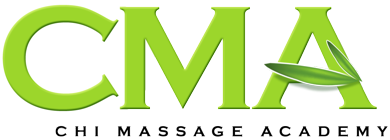Thai-style pleasures
The hands of petite Eastern girls with ribald smiles slide on the warm oil and we acknowledge with quiet moans: this is heaven on earth. This is about how someone who never tried Thai massage imagines it to be, based on the stories of their compatriot end of season tourists who gained their experience on the sands of Pattaya and Phuket, secretly expecting steamy eroticism. Reality is absolutely different. The real Thai is dry, bitter and painfully finds our weak points. One has to work hard for paradise.
Hint
We should drink plenty of liquids after massage, so that the slag materials from the joints and muscles can leave easier. Pure mineral water, tea or a cup of warm water with lemon slices are recommended. We should not make hard physical motions afterwards, because our joints then are loose and vulnerable. If possible, we should rest, relax or even sleep an hour.
Because Thai massage is not part of the sex industry, but traditional Easter medicine. It is trying to revive the stunted self-healing capability of the body due to the achievements of civilization, with manual techniques. For this, it triggers the flow of vital energies, the chi, which has often sunk to a critical level, by stimulating the ten main energy channels. This is not a piece of cake, especially not for someone who undergoes the hands of the masseur for the first time. Energy blocks do not surrender easily. They like to be painful, sting, ache and cramp in order not to be disturbed. Yet they need to be, because they can cause serious problems in the long run. Already a reason why Thai massage is not that ribald: the hands of the masseur get stuck by our own cramps.
The other reason is that Thai massage is a dry massage. No oils or creams are used, in contrary to the loosening Swedish or sport massage. It is conducted based on a specific choreography, in light, loose cotton clothes. Because the masseur does not only use his/ her hands, but also the lower arm, leg, knees, elbow, sole and occasionally, full body weight, in order to stimulate the acupunctural physiological points located along the meridians, while he/ she also performs bending and stretching motions as well. This is when we give thanks that Thai girls are small and light: maybe Mr. Gyuri, the main masseur has hands of gold, but he should never stand on our lower back, not for all the money in the world. So Thai is the unique combination of acupressure, meridian massage, manual therapy and chiropractic (osteopathy).
We have nothing to do during the one and a half hour but to let go of everyday things, feel loosened and surrender with our eyes closed to the careful hands, feet and gentle elbows. To pay attention to our bodily sensations: where it hurts, where it feels good, where our body sets us free and where it holds us back. As an effect of the turning, pressing, oppressing, kneading, stroking, turning, cracking and treading our body experiences controversially wonderful feelings: our blood circulation increases, the oxygen supply of the tissues and the lymphatic circulation becomes better, while our body relaxes and calms down, and in a good case – this is only up to us and the masseur – our mind calms down and our buzzing thoughts take a break. That is, healing starts. The aim is not reveling, but the restoring of normal life functions in every part of the body.
One would not believe, but apart from putting jammed joints and muscles back to their place, Thai massage is good for a whole bunch of serious diseases: nervous, lymphatic and digestive system related ones, for gynecological and respiratory diseases, moreover, for treating sleep disorders, stress, headache and migraine as well.
Thai history
The roots of Thai massage stretch back to India. According to the legend, approximately 2500 years ago Shivago Komarphaj (the doctor of the King), peer of the historical Buddha developed the technique that spread and conquered other parts of the world along with Buddhism. Indian yoga and Chinese medicine had a great influence on it. It reached the area of today’s Thailand in 300 B.C. The knowledge was passed on by word of mouth in Buddhist temples and through families, and eventually it was put into writing in Pali language. The secret was safeguarded in Ayutthaya, the old capital of Thailand until 1767, when during the Burmese invasion most of these writings were destroyed. Only fractions remained.
Today two styles developed: the Southern, softer Wat Po, and Chiang Mai from the North, containing more cracking osteopathic elements.
In Hungary more and more people deal with the healing potential of Thai massage seriously. Monika Karsai spent several years in Thailand, where she personally learned from old masters, then mastered the knacks in the Wat Po School in Bangkok. According to her, the basis of real Thai massage is precise technique, but its essence is much more than this: Metta, which means loving kindness, by which she feels the patient’s complaint and reaches to the depth of symptoms on the surface. She founded Chi Thai Massage Center at the Istenhegyi Private Clinic, where they provide Thai-style pleasures by combining knowledge from the East with Western medicine.



